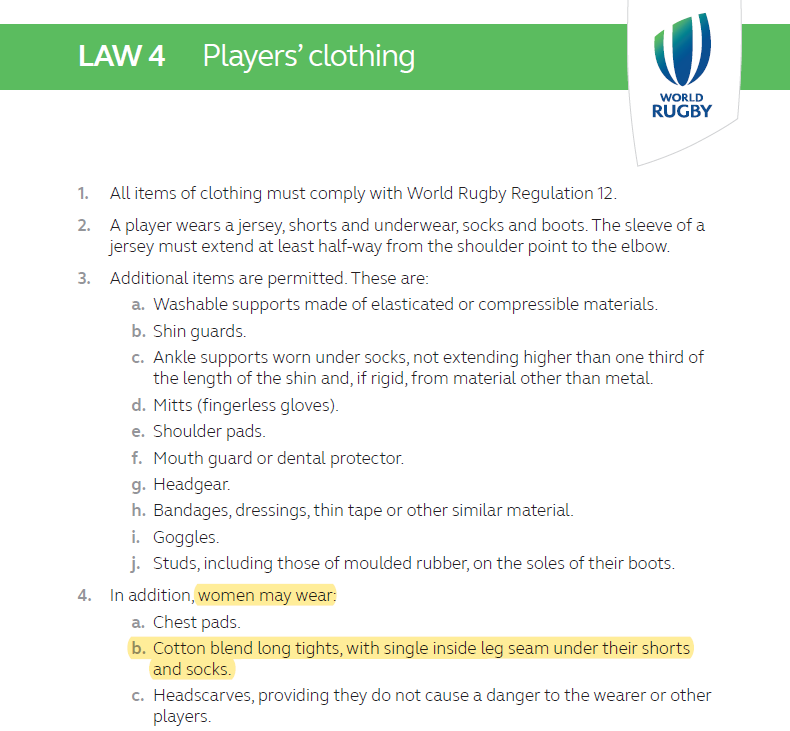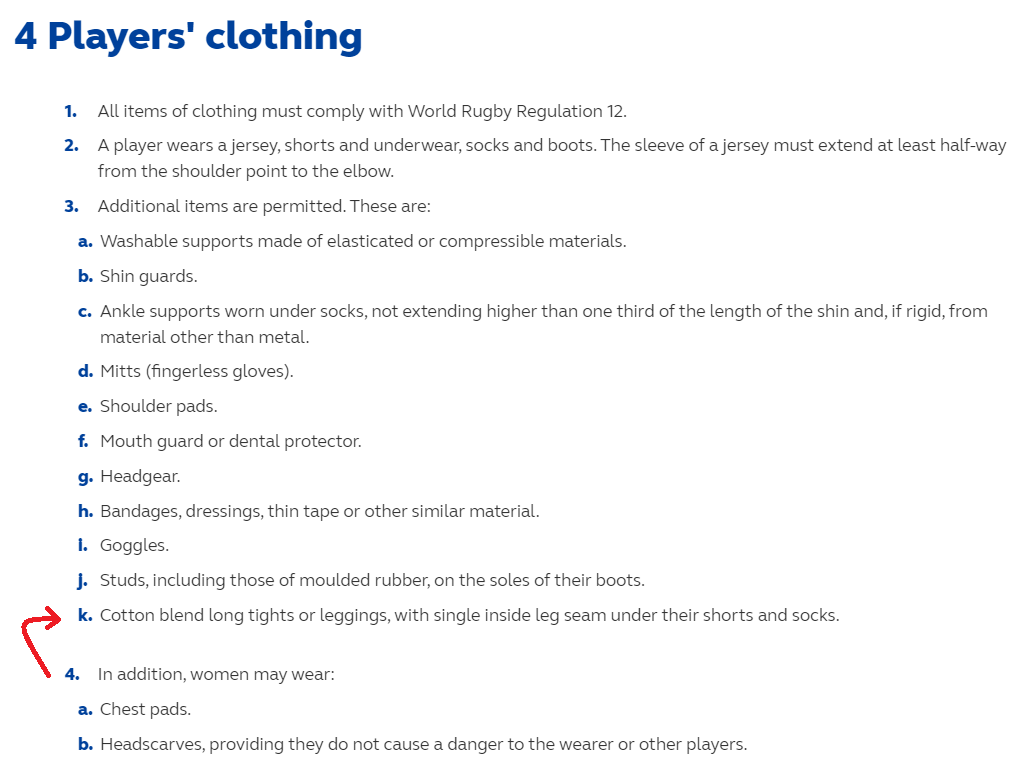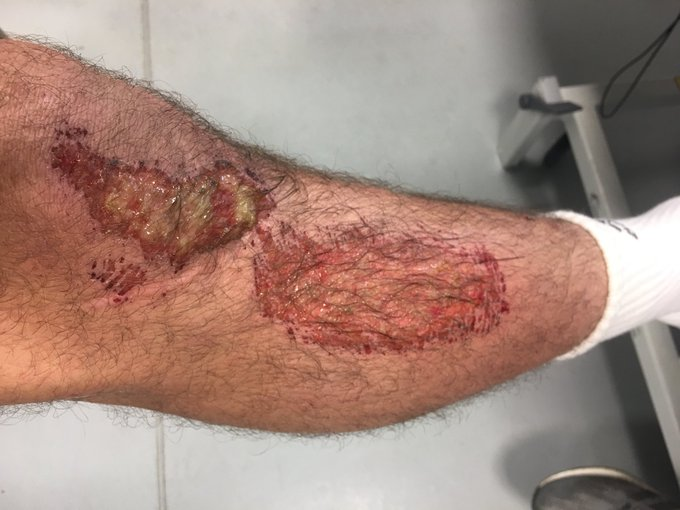Law trials and changes
-
@trodthesod id also say less reasons for penalties, let teams come up with ways to defend things like pods rather than banning them, realise a dominant scrum having super front foot ball and the scrum that just been beaten being on the ground and therefor out of the game is enough reward...dont stop it for a penalty
-
@trodthesod said in Law trials and changes:
There is a game with less scrums and kick out from the goal line,and it’s league.Some of rugbys differences are being eroded .It’s not less scrums we need but quicker ,much too long taken since the referees have taken over setting them.
I'm not laying that one on the refs, who are under "safety directions"
professional scrum coaches, and the evolution of the scrum from a restart to a way to generate penalties are the scourge
Maybe the free-kick for scrum infringements was the right idea? But i'm not really 100% on board with that after the 77th minute last night, that scrum was awesome and deserved winning the game. Perhaps we need to change the mindset to one of "deserved teh chance to win the game"
-
@mariner4life do we think having a super dominant scrum deserves the right to direct points? the scrum is just a competition for the ball, surely winning the ball is the most you can expect from just winning the scrum
-
@kiwiwomble said in Law trials and changes:
@mariner4life do we think having a super dominant scrum deserves the right to direct points? the scrum is just a competition for the ball, surely winning the ball is the most you can expect from just winning the scrum
Winning the ball, forward momentum and (if we're near the try line) the chance to push over and score a try.
Taking reset scrums back to the 5 yard line eliminates the opportunity to score pushover tries, which in my opinion is a step backwards.
Same question is whether a mis-timing at the tackle is worth points - penalties have to be meaningful, it's just not clear what that consequence should be.
-
this just becomes a philosophical debate about rugby really.
In a game of fine margins and judgement calls, should errors in timing be worth points? I have never thought so.
But then i can see the point from teh other side. Not giving up points will make teams push the envelope more. And i don't want more yellow cards. Also, in a lot of top level games, actually having the ball can be a disadvantage. Where is the line drawn in a game already incredibly difficult to referee?
Would i have been happy for that last scrum to do not much more than give the French another opportunity to attack? yeah i guess so. Many many more people would disagree with me, especially those that see rugby as more than a running game.
-
@nzzp and it inspires this negative play, actually playing for a penalty, we'd possibly see more stable scrums if there wasn't the same rewards for things going wrong
is there something to be said for something in between a free kick and a penalty, where you could kick for touch and get the feed, but cant choose to kick for goal
-
Over the years the laws of rugby have in my opinion made rugby more dangerous to play.Play and tackles are now mostly head on collisions.Forwards don’t all go to the breakdown.,hands allowed in the tackle,no rucking allowed,all head down situations which exposes the head.
Hate saying this but most of the tackles made in the earlier years of rugby were made side on and around the legs.If as a forward you made a tackle at all you were applauded.
Scrums were screwed legally and weren’t the massive hits they are now.
In the process of making the game more of a spectacle they have made it more unsafe.Cant have it both ways. -
@trodthesod said in Law trials and changes:
Over the years the laws of rugby have in my opinion made rugby more dangerous to play.Play and tackles are now mostly head on collisions.Forwards don’t all go to the breakdown.,hands allowed in the tackle,no rucking allowed,all head down situations which exposes the head.
Hate saying this but most of the tackles made in the earlier years of rugby were made side on and around the legs.If as a forward you made a tackle at all you were applauded.
Scrums were screwed legally and weren’t the massive hits they are now.
In the process of making the game more of a spectacle they have made it more unsafe.Cant have it both ways.Can't argue with that
-
Note that this is for NZ community rugby only:
NZR to trial expansive range of community rugby law variations in 2022
New Zealand Rugby (NZR) is enhancing the safety and appeal of the sport in 2022, with an expansive range of Experimental Domestic Safety Law Variations (EDSLVs) being rolled out in school and club rugby next season.
Eight of the fifteen approved EDSLVs will be rolled out nationally across Small Blacks, Teenage Rugby and Senior Rugby; with the other seven being trialled in selected competitions, in consultation with Provincial Unions.
National changes include reducing tackle height, enhancing breakdown and scrums, and ensuring players remain grounded whilst contesting high balls, in a bid to reduce aerial collisions.The changes for 2022 are intended to preserve the characteristics of the game, while ensuring rugby remains relevant, accessible, and appealing to the 160,000 players, coaches, and referees across the country. It’s all part of our plan to future-proof rugby.Variations will also be introduced in Under 6 to Under 8 Small Blacks rugby, including reducing the field size, which Lancaster says reflects best-practice for the development of young rugby players.
Lancaster said NZR was taking a leap and learn approach to improving participation, and the EDSLVs being trialled demonstrated NZR's commitment to Sport New Zealand’s Balance is Better philosophy, and Rugby's focus on player safety through their RugbySmart partnership with ACC.
Provincial Unions are set to introduce the new developments into school and club rugby from 1 January 2022. Any future application of the EDSLVs will be determined following a review at the conclusion of the 2022 season.Find out more about the 2022 EDSLVs
2022 SECONDARY SCHOOL RUGBY CHANGES
AREA TRIAL WHY POTENTIAL BENEFITS WHO High ball contest* Players must remain grounded when catching high balls Collisions in the air are dangerous for all jumping/involved Reduce aerial collisions and ensure safer outcomes for those receiving high balls All Secondary School and below, excl 1st XV. Extend to 1st XV Rugby subject to consultation with HP and PUs Tackle* All tackles must be below the sternum Tackles above belly put heads in the same ‘airspace’ risking collision Safer tackles for all, reduced likelihood of head impact. / Ball can be offloaded. / Faster game All Secondary School and below, excl 1st XV. Extend to 1st XV Rugby subject to consultation with HP and PUs Scrum Reset scrum following no infringement results in team originally awarded the scrum being offered uncontested scrum or free kick Reduce repeated resets due to technical competence and/or fatigue Increased playing time / Reduces risk of scrum injuries / Provides tactical variety All Offside at Scrum The halfback of the team not in possession must remain 1m from the scrum and may not advance past the tunnel until the scrum has ended Promote positive play Provides faster and cleaner ball . / Provides greater options for No 8 and No 9 plays off the back of the scrum All Designated non-Premier Secondary School Rugby+ Game on Field dimensions may be varied with agreement using existing field markings down to ½ field Provide further game variations to flexibly meet participants needs All Designated non-Premier Secondary School Rugby *excludes 1st XV Rugby, subject to organising committee decision.
+Designated Premier Grade Competitions include competitions that have been designated by the Provincial Union/s (or other organisation, such as a regional secondary school sports authority) having jurisdiction over that competition. More than one grade may be designated as a Designated Premier Grade Competition.
2022 SENIOR CLUB RUGBY CHANGESAREA TRIAL WHY POTENTIAL BENEFITS WHO Scrum Reset scrum following no infringement results in team originally awarded the scrum being offered uncontested scrum or free kick Reduce repeated resets due to technical competence and/or fatigue Increased playing time / Reduces risk of scrum injuries / Provides tactical variety All Scrum 1.5M Maximum Push unless within 5m of goal line. Free kick awarded to the team who had the scrum feed. Improve scrum stability and reduce frequency of resets Reduced risk of scrum injuries / Reduced ability to scrum for penalties / Retain ability for pushover tries / Increase ball in play All Offside at Scrum The halfback of the team not in possession must remain 1m from the scrum and may not advance past the tunnel until the scrum has ended Promote positive play Provides faster and cleaner ball / Provides greater options for No 8 and No 9 plays off the back of the scrum All Designated non-Premier competitions* Game On Field Dimensions may be varied using existing field markings down to ½ Field Provide further game variations to flexibly meet participants needs Smaller field for smaller playing numbers provide a more meaningful experience All Designated non-Premier competitions *Designated Premier Grade Competitions include competitions that have been designated by the Provincial Union/s (or other organisation, such as a regional secondary school sports authority) having jurisdiction over that competition. More than one grade may be designated as a Designated Premier Grade Competition.
-
Players, unions and competitions support new guidelines for rugby contact training load
World Rugby and International Rugby Players (IRP) have published new contact training load guidance aimed at reducing injury risk and supporting short and long-term player welfare. The guidance is being supported by national players’ associations, national unions, international and domestic competitions, top coaches and clubs.
Earlier this year, World Rugby unveiled a transformational six-point plan aiming to cement rugby as the most progressive sport on player welfare. These new best-practice guidelines focus on the intensity and frequency of contact training to which professional rugby players should be exposed and have been shaped by consultation with players and coaches as well as leading medical, conditioning and scientific experts.
While the incidence of training injuries is low relative to that of matches, the volume of training performed means that a relatively high proportion (35-40 per cent) of all injuries during a season occur during training, with the majority of these being soft tissue injuries. Since the training environment is highly controllable, the guidelines have been developed to reduce injury risk and cumulative contact load to the lowest possible levels that still allow for adequate player conditioning and technical preparation.New ‘best practice’ training contact guidelines
World Rugby and International Rugby Players’ new framework [https://www.world.rugby/the-game/player-welfare/medical/contact-load] sets out clear and acceptable contact guidelines for training sessions, aiming to further inform coaches – and players – of best practice for reducing injury risk and optimising match preparation in season. The guidance covers the whole spectrum of contact training types, considering volume, intensity, frequency and predictability of contact, as well as the optimal structure of sessions across the typical training week, including crucial recovery and rest periods.
Recommended contact training limits for the professional game are:- Full contact training: maximum of 15 minutes per week across a maximum of two days per week with Mondays and Fridays comprising zero full contact training to allow for recovery and preparation
- Controlled contact training: maximum of 40 minutes per week
- Live set piece training: maximum of 30 minutes set piece training per week is advised
The guidelines, which also consider reducing the overall load for players of particular age, maturity and injury profile (in line with the risk factors and load guidance published in 2019), will feature in the men’s and women’s Rugby World Cup player welfare standards.
Instrumented mouthguard research programme to inform effectiveness
World Rugby is partnering with elite teams to measure the ‘real life’ effect of these guidelines (in training and matches) and assess the mechanism, incidence and intensity of head impact events using the Prevent Biometics market-leading instrumented mouthguard technology and video analysis to monitor implementation and measure outcomes.
(...) -
A player welfare related law change:
OLD:

NEW:
If you know what grazes/ burns caused by artificial turf feel like (or like I experienced in my playing days, they frequently result in skin infections despite proper medical treatment), you'll know this is a good thing. I hated playing on artificial turf (they're probably better now, but still cause problems for some).By the way, I don't think this clothing option was introduced for women with artificial turf in mind; I think it was more a religion thing, like the headscarves, when rugby became more popular among women in some islamic countries.
There is no official announcement from WR (yet) about this law change, but as you can see above, they've made the change in the online version of the Law Book. I found out about because I read the article below.
-
Yeah artificial grass sucks. You play a game you feel like you’ve had a cheese grater move up and down your limbs.
-
Hockey turf is cushioned and less abrasive, but that's cos they water them, not sure theyd work for rugby...boy I used to hate playing on the old sand turf in Whangarei, 150 grit sandpaper!
-
@stargazer said in Law trials and changes:
WB: “What we also saw was a try off a forward pass. That’s one of the new law trials”
Cameraman: “that’s not a law trial”
WB: “it isn’t?”
Cameraman: “no Wayne you muppet. That’s one of the original founding laws from 1823”
WB: …
-
‘Game On Global’ community law variations to advance rugby accessibility and welfare
Welfare and accessibility are at the heart of Game On Global, a groundbreaking programme of optional community law variations launched by World Rugby and national member unions today.
-
Modified contact, weight-banded matches and lowered tackle height at the heart of new community law variations to further advance accessibility and welfare
-
Law variations include flexibility in number of players, game duration, pitch size, ball size, as well as variations to scrums, lineouts and kicking rules
-
Promoting global consistency at the community level of the game, the menu of 10 law variants can be implemented by national unions from January 2022
-
The introduction of Game On Global follows World Rugby’s recently launched participation plan to accelerate sustainable rugby involvement
-
Implementation of the law variations will be optional and available in part or in whole for National Unions to determine.
-
Central monitoring, and research will be undertaken evaluate impact
Game On Global provides national unions with the ability to implement modified laws at a domestic mass participation level, furthering game experience and safety for participants. Unions can pick and choose from dependent on their context and purpose.
Promoting global consistency in the law variations open to unions at the community level of the game, a menu of 10 law variants are now available to all unions. From January 2022 the Game On principles can be utilised by all World Rugby member unions at their discretion:
VIEW THE LAW VARIATIONS >> (this links to a Word document)A number of national models of good practise already in existence, including in England, New Zealand and Wales, who have shared their knowledge and expertise in the development of World Rugby’s global project, which builds on these models and extends to other areas of the game.
You can find my post about the NZ initiative "Game on" here:
https://www.forum.thesilverfern.com/post/402684 -
-
@machpants said in NH International Rugby:
Scrum tweak trial
Re-posted this here in case others don't pick it u.
Any opinions from the Front Row club?

